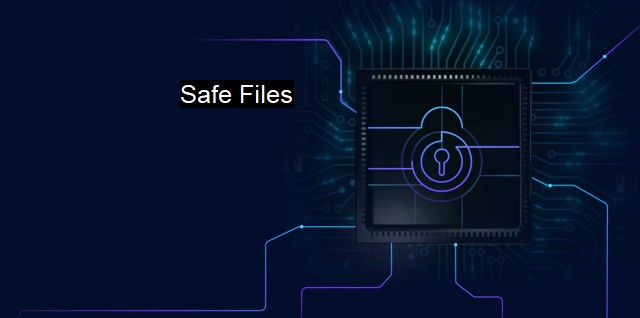What are Safe Files?
Safe Files: The Crucial Security Feature to Protect Your Data Against Ransomware Attacks
"Safe files" refers to a feature within an antivirus program that ensures the protection and safety of a crucial document or a collection of files on a computer or a network. Given that cybersecurity incidents are escalating in sophistication, scale, and frequency, there is an urgent need to ensure the safety of data files.The usage of the internet and digital platforms is nearly ubiquitous. With these digital advancements, the vulnerability and susceptibility to baggage from the digital society, such as data loss, cyber threats, malware and virus attacks, are inherent. This is where the significance of safe files comes into play. It intelligently questions the safety of files and examines them for potential threats.
a ubiquitous real-time security layer covering the activities across your system, safe files protect your most valuable and sensitive data from ransomware attacks and unauthorized access. It cleverly ensures that unauthorized applications do not alter, edit, delete, or move these files. So, vital files are immune from inadvertent changes by greedy applications, and you find them exactly where you left off!
The system of safe files is state-of-the-art and extremely proactive. The antivirus product keeping an eye on activities on your computer is not sufficient, safe files throw a security blockade around certain files. This barricading effect makes it tough for worms, Trojan horses, spywares, and viruses to gain access.
Cyber-attackers often try to ‘encrypt’ user data files in ransomware attacks. Once the data is encrypted, they then demand a ransom in return for the decryption key. During this unlawful encryption process, safe files serves as the "digital bodyguard". It promptly identifies any unlawful activity and puts a hard stop to it. In simpler terms, safe files integrates as an add-on feature with antivirus software to keep personal data out of reach from such unauthorized, harmful encryption activities.
The mechanism of safe files is efficient. They control access to critical data even at the application level, thus preventing sensitive digital data from unauthorized modifications. These preventive measures impose a significant blow to malware and other cyber threats, significantly reducing their destructive capacities.
Most modern cybersecurity solutions provide notifications or options for whitelisting certain applications that are frequently used and trusted by the user. This type of using access control strategy restricts the access to precious files to only a selected few user-approved applications.
The data privacy and security guarantees that safe files provides are unparalleled. With safe files, the key person has a stronghold over data protection, ensuring business continuity or smooth operation of daily tasks. it brings about a visible increase in the computer's capability to combat malware, ransomware, phishing attacks etc.
The utility of Safe Files in cybersecurity is absolutely massive. They keep your most treasured and sensitive documents out of malware’s reach. Authorization only by clearance blesses you with complete control over your files. So, whether it's important business files, priceless photos, or even your favorite music albums and films which are dear to you, safe files may be the gamechanger in protecting these! By their proactive detection system, inevitable inspection mechanism towards any unfamiliar tweaks and brute force repulsion to harmful incursions, Safe Files become an indispensable part of antivirus solutions. Safe files segregate you to the realm kn ought to be - safe, secure and nonetheless, sure!

Safe Files FAQs
What are safe files?
Safe files are digital files that do not pose any potential harm or threat to the system or device on which they are stored or accessed. These files are free from any malware, virus, or any other cybersecurity risks that can harm the device or compromise its security.How can we identify if a file is safe or not?
There are various ways to identify if a file is safe or not. One of the most effective ways is to scan the file using an antivirus software. If the file has no malware or virus detected by the antivirus, then it can be considered safe. Another way is to check the source of the file, and ensure it is from a trusted and reliable source.Why is it important to have safe files?
Having safe files is crucial for maintaining the security of your device and data. Unsafe files can cause various damages to your system, from data loss to identity theft. Safe files, on the other hand, ensure that your device is protected from potential threats and that your data is secure.What should we do with unsafe files?
If you encounter an unsafe file, it is recommended to delete it immediately. Never download or execute a suspicious file, as it may contain malware that can harm your device and data. If you accidentally downloaded an unsafe file, scan your device with an antivirus software and remove any potential threats.| | A | | | B | | | C | | | D | | | E | | | F | | | G | | | H | | | I | | | J | | | K | | | L | | | M | |
| | N | | | O | | | P | | | Q | | | R | | | S | | | T | | | U | | | V | | | W | | | X | | | Y | | | Z | |
| | 1 | | | 2 | | | 3 | | | 4 | | | 7 | | | 8 | | |||||||